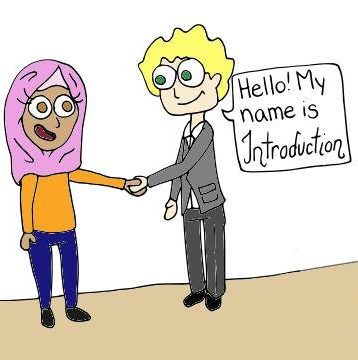76 Writing Introductions
The common phrase “you don’t get a second chance to make a first impression” expresses how much weight people place on their first experiences when reading a piece of writing. Catching the attention of readers may be your most important task as you write: if you lose them in the introduction, you won’t get a chance to share your message with them later.

Figure 7.6: Crafting a good introduction
Introductions have three jobs:
- Introduce the focus and purpose of your writing (ie., the main idea and thesis if applicable).
- Provide a brief overview of what you will discuss.
- Catch the attention of readers.
How do you accomplish these jobs without giving away your entire essay in the introduction? How do you know what will hook readers’ attention without sharing all the cool details? Great questions!
You might start by using this simple formula.
If your piece begins with an idea most people know and agree with, it’s less likely to pull readers in. People are curious about new ideas and opinions that have multiple perspectives or may be controversial.
See Table 7.5 for some methods for introducing a topic and getting a reader’s attention.
Table 7.5: Methods for introducing a topic
| Method | Reason |
|---|---|
|
Share an interesting, shocking, or little-known fact or statistic about your topic. |
This gives your readers insight into your topic right away; it will pique their curiosity and make them want to know more. It will also help you establish a strong ethos, or credibility, from the very beginning. |
|
Share a brief anecdote or story. |
Sharing a human interest story right away will help readers connect with your topic on a personal level and illustrate why your topic matters. |
|
Ask a question that gets readers curious about the answer. |
People want to know the answers to questions. They’ll keep reading to find the answers you pose in your introduction – just be sure to answer them at some point in your writing. |
Student Tip
Share Your Introduction
After you have drafted your introduction, share it with a peer or a friend. Ask them: Does the introduction catch your attention? Does the introduction predict what my paper is about? If they answer “no” or “sort of,” it needs to be refined.
Attribution statement
Content from this page was remixed with our own original content, and adapted, with editorial and organizational changes, from:
The Word on College Reading and Writing by Carol Burnell, Jaime Wood, Monique Babin, Susan Pesznecker, and Nicole Rosevear, licensed under a Creative Commons Attribution-NonCommercial 4.0 International License, except where otherwise noted.Download for free at: https://openoregon.pressbooks.pub/wrd/

